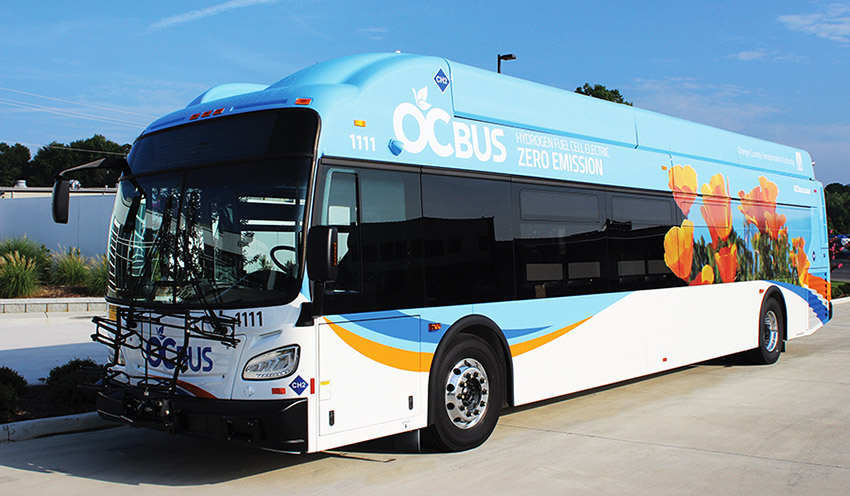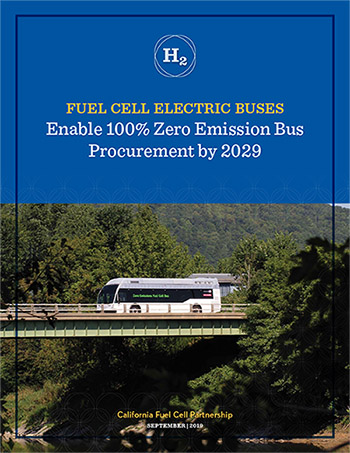The California Fuel Cell Partnership released its second bus road map, Fuel Cell Electric Buses Enable 100% Zero Emission Bus Procurement by 2029, calling for 11 essential actions and setting new industry targets needed to widely adopt fuel cell electric buses (FCEBs) in the Golden State.
The road map’s release comes on the heels of two different, but inter-related dynamics: the continuing maturity of FCEB technology and fleets across the globe, and the increasing demand for zero-emission transit in California and across the U.S.

“California has 20 years of experience with fuel cell technology in transit, reflecting the leadership of many, especially three transit agencies: SunLine Transit, AC Transit and the Orange County Transportation Authority,” said Bill Elrick, executive director of the California Fuel Cell Partnership. “They see the value of the technology in their daily operations and continue to expand their fuel cell fleets.”
In late 2018, the California Air Resources Board (CARB) mandated that California transit bus fleets must be zero emission by 2040, requiring that all bus purchases in 2029 and after must be battery electric or fuel cell electric. It is the first vehicle category in California that is mandated to go all zero emission.
If transit agencies are to meet this 100% mandate, fuel cell electric buses will play an essential role, with long range, fast fueling and other significant performance benefits that allow them to offer zero emissions with zero compromise. In addition to helping California achieve clean air goals through substantial reductions in greenhouse gas emissions and other pollutants, the volume of hydrogen required to fuel these buses will help drive down per-kilogram costs for all vehicle categories, including passenger cars.
The bus road map, developed by CaFCP members, lists 11 essential actions that are crucial to realizing the 2029 milestone and 2040 target set by CARB. The road map also envisions bus purchase targets, sets new technical and cost milestone targets for industry, and presents commercial sustainability goals.
This bus road map complements and builds on the California Fuel Cell Partnership’s 2030 vision, The California Fuel Cell Revolution, which called for policies and market-based mechanisms that will help the Golden State achieve a sustainable market without government funding for cars, buses and trucks fueled by renewable and zero-carbon hydrogen. The 2030 vision recognized that
“Over the next decade, fuel cell electric buses will be deployed as the zero-emissions solution for the toughest transit applications in every bus type and for every climate and terrain any day of the year.”
